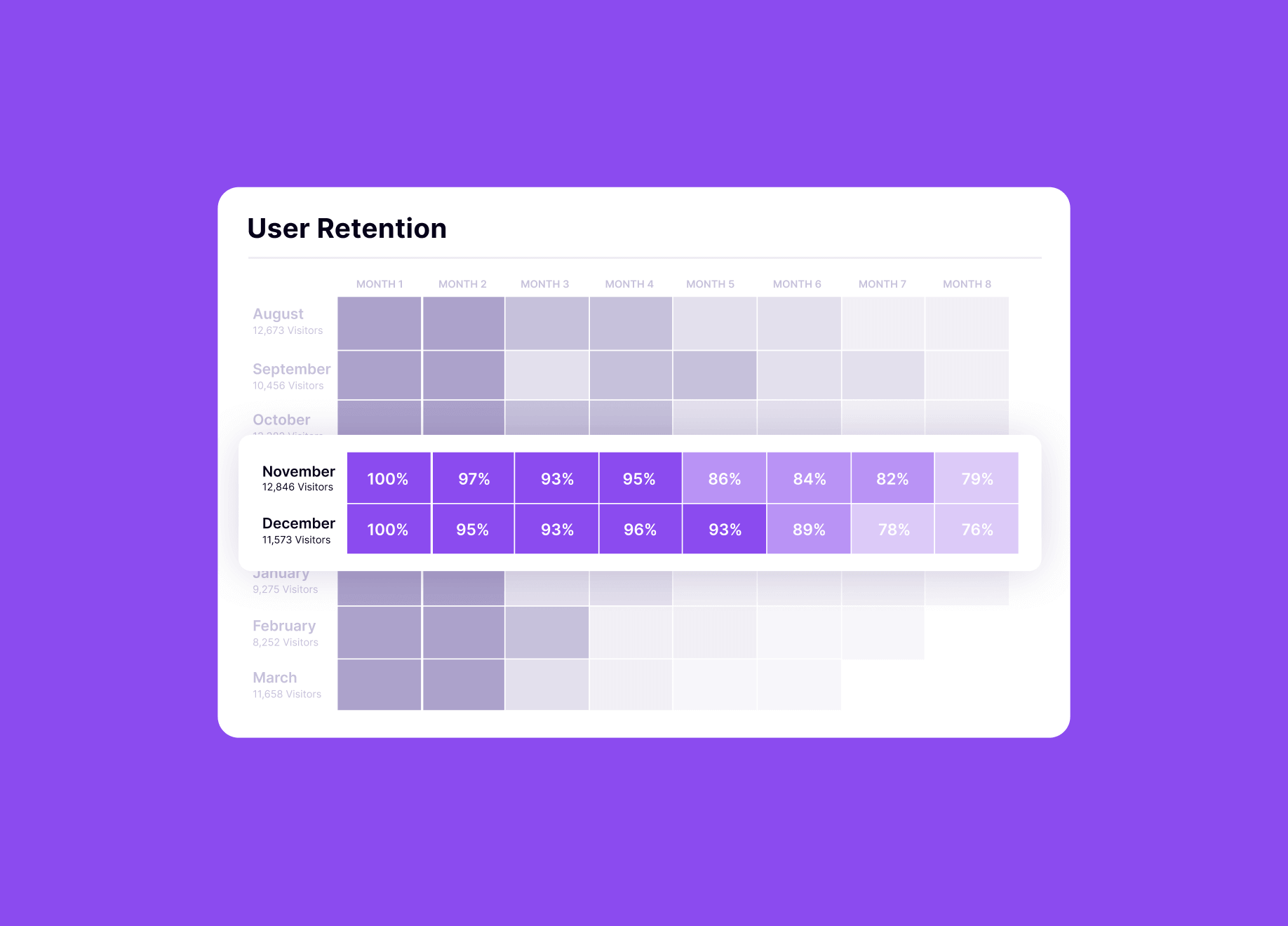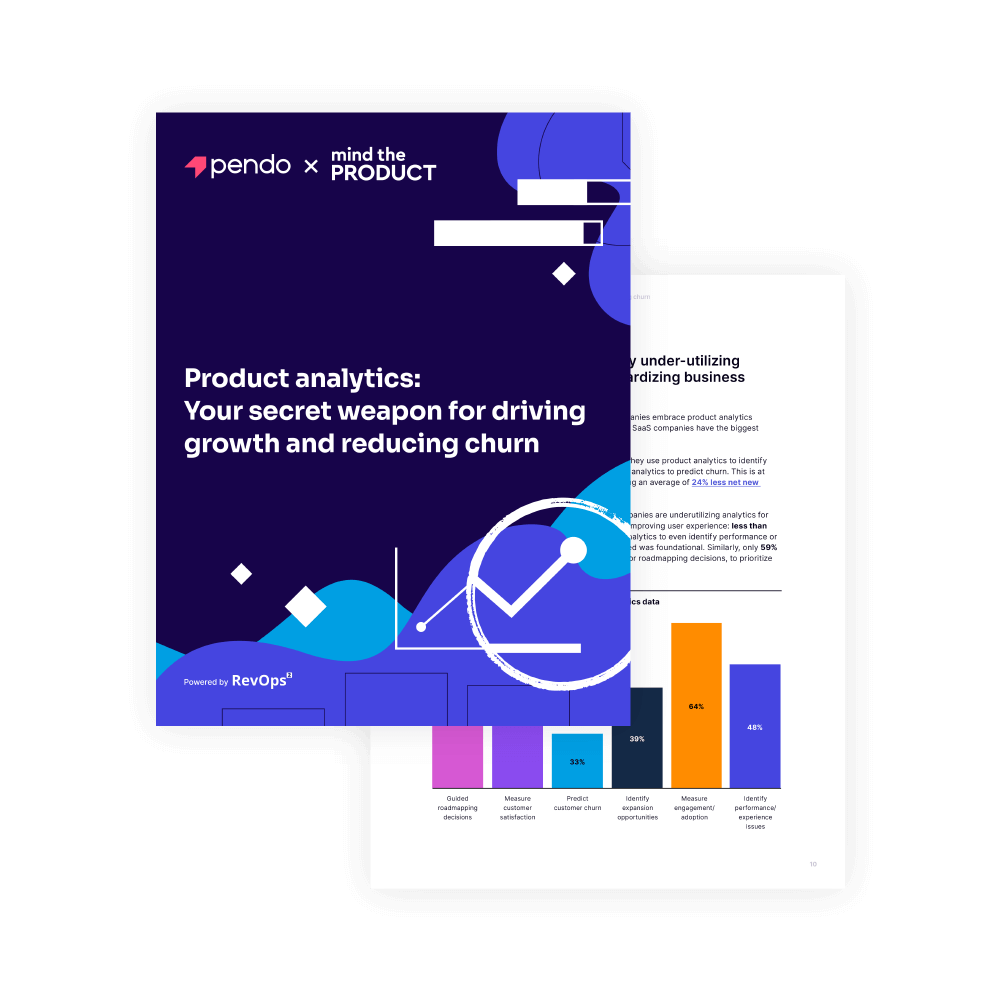Table of Contents
What is user retention?
Also known as “cohort retention,” user retention is a key metric to measure the growth of SaaS and digital products. User retention looks at first-time users within a specific time frame (typically one month or one week), and calculates the percentage of those users that return in subsequent time periods. User retention can measure user logins globally, logins for a subset of users, or retention for specific behaviors like visiting a part of an application, using a specific feature, or completing a key workflow.
Retention analytics can be used to answer questions like:
- Do large or small accounts have higher retention rates?
- What features are used most heavily by users who return regularly?
- How does retention vary across different customer personas?
- Is retention consistent among different marketing channels?
- How well is a new feature performing?
What drives user retention?
- Onboarding: User retention starts with successful onboarding. A user must be able to execute product basics, like setting up their new account. If there are key configuration steps, such as completing an integration or inviting teammates, the user must be guided through those actions as quickly as possible.
- Activation: Once onboarding is complete, it’s critical that new users see immediate value from the product. Helping the user realize early wins builds momentum and motivates them to return.
- Habit: The final step in driving user retention is creating usage habits. What triggers should prompt a user to come back to the product to complete another task? Combining user habits–like taking a photo of a receipt for expense-processing apps–with the natural usage frequency for the application can inform an organization’s onboarding and activation strategies.
As an example, the team at Oranj saw that the customers they retained had users who visited the platform very often and completed onboarding. With this initial insight, they used product usage data to identify where users dropped off during the onboarding process and worked to increase onboarding completion and ultimately, drive retention.
Why is user retention important?
User acquisition is expensive. Often it takes SaaS companies years before they can turn a profit on a new customer. Failing to retain customers means that every new business win results in a financial loss. Only by retaining customers past the payback period can an organization turn a profit on each customer.
What’s the difference between user retention and customer retention?
These are related but distinct terms. User retention looks at the individual who logs in to use a product (a usage metric), while customer retention looks at the account that pays for access to the product (a financial metric). For consumer companies, user retention and customer retention are essentially the same since the individual user is also the one who typically pays for the service.
What’s the difference between user retention rates and churn rates?
In short, user retention rates and churn rates are inverses of each other. While user retention measures how many users return to a product within a given time frame, churn measures the number of users who have stopped using a product within that same period. Although they are two sides of the same coin, many companies choose to view data from the retention perspective, since it offers a more positive outlook while still helping to identify areas for improvement. Regardless of which metric you use, it’s important to choose the right time period. This will depend on what regular (or ideal) usage of your product looks like, for example a shorter time frame makes sense for a product that is used daily, whereas a product that is used monthly warrants a longer time period for retention/churn measurement.
How to measure user retention
Once you’ve decided on the appropriate time period, measuring user retention is quite simple. First, use product analytics to compare the number of users at the start of the time frame with the number of users at the end of the time frame. To calculate your user retention rate, divide the first number by the second number. As mentioned above, you can segment your user base to view retention from different perspectives; user retention can measure user logins across the entire product, logins for a subset of users, or retention for certain user behaviors.
You might also like



